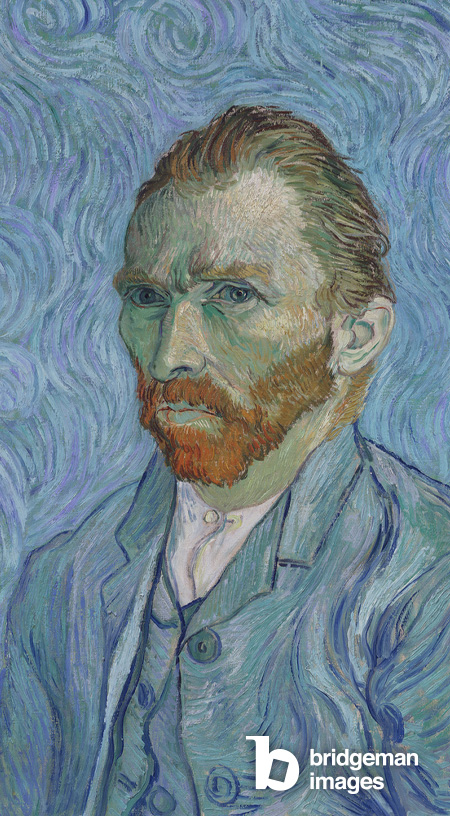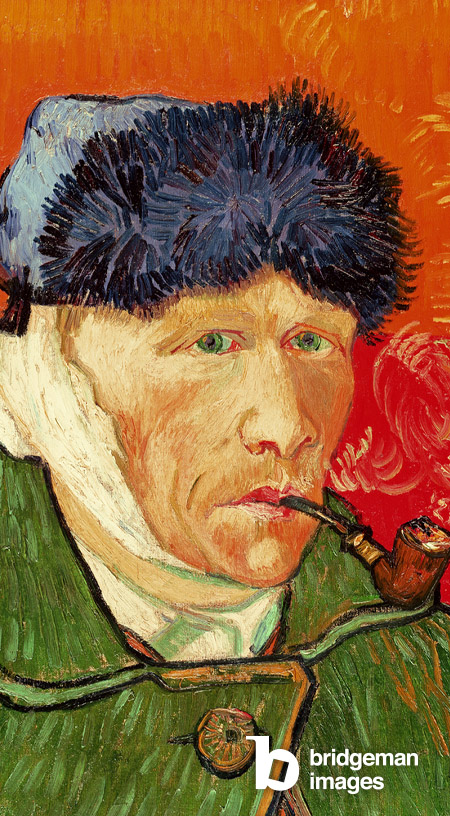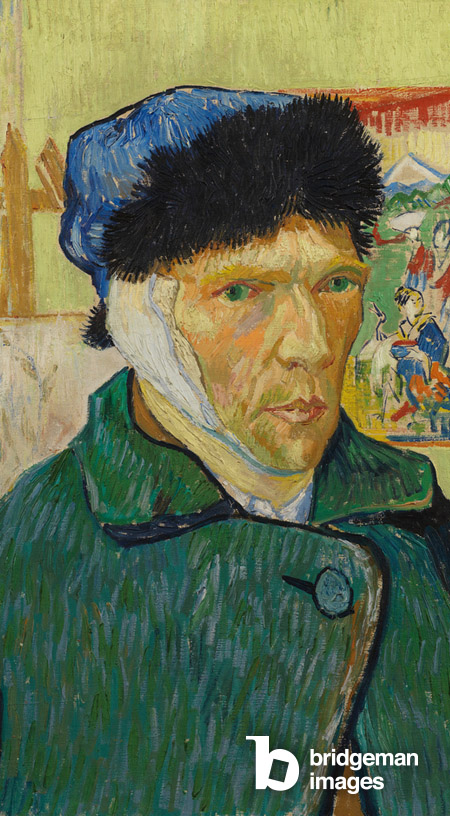Published 26/10/2023
Most people have heard of Vincent van Gogh, even though he wasn’t famous in his own lifetime. His painting of sunflowers is one of the most popular images in the world, reproduced millions of times. Van Gogh was a Dutch post-impressionist painter. Though he struggled with mental illness and died in poverty, Van Gogh produced around 2,100 artworks, including around 860 oil paintings, most of which were created during the last two years of his life.

His paintings now rank among the world's most expensive as well as the most iconic. Van Gogh's dramatic and expressive painting style was a formative influence on 20th-century art, especially Fauvism and Expressionism.
He is perhaps best known for paintings like The Starry Night, Sunflowers, and his Self-Portrait with Bandaged Ear.
How Many Van Gogh Self Portraits Are There?
Vincent van Gogh created over 30 self-portraits during his career. Though the exact number is debated by art historians, it is estimated that Van Gogh painted 37 self-portraits between the years 1886 and 1889.
His self-portraits were an important part of his life's work, as he used them to study himself and his painting techniques. Van Gogh used experimental techniques with his self-portraits. He liked to play around with different colours, brushwork, and compositions.
Some of his most renowned self-portraits include Self-Portrait with Grey Felt Hat (1886), Self-Portrait with Bandaged Ear (1889), painted shortly after he famously cut off part of his left ear, and Self-Portrait with Straw Hat (1887).
Van Gogh self-portraits provide us with lots of insight into the artist's life, his mental state, and how he saw himself. Today, his iconic self-portraits can be found in renowned museums around the world, including the Van Gogh Museum in Amsterdam, the National Gallery of Art in Washington D.C., and the Musée d'Orsay in Paris. Van Gogh's bold and imaginative approach to self-portraiture had a lasting influence on 20th-century art.
Which One is the Most Famous?
Starry Night Over the Rhône is one of Van Gogh's most famous portraits, but his most iconic and famous portrait is his Self-Portrait with Grey Felt Hat from 1887.
Why Is Self-Portrait with Grey Felt Hat Considered Van Gogh's Most Famous Portrait?
· It is one of his earliest self-portraits, created when he began dedicating himself fully to art. Many art critics and historians see this painting as representing a pivotal moment in Van Gogh's artistic career.
· The striking use of colour, thick impasto brushstrokes, and intense emotional expression make this a quintessential Van Gogh portrait. It exemplifies his mature post-impressionist style.
· It has been widely exhibited, reproduced, and analysed. The painting is part of the Van Gogh Museum collection in Amsterdam and has been the subject of songs, poems, and more.
· The introspective, melancholy expression and penetrating gaze have become iconic. This portrait ultimately helped define Van Gogh as the tortured, intense artist in the public imagination.
So, while he created multiple famous self-portraits, Self-Portrait with Grey Felt Hat stands out as his most recognisable and influential portrait overall. Other masterpieces like Starry Night may be more famous works, but this portrait truly made Van Gogh's face and style famous worldwide.
Vincent Van Gogh Portrait with Grey Felt Hat
In this self-portrait, van Gogh presents himself wearing a grey felt hat. The hat becomes an intriguing focal point, adding a sense of mystery and intrigue to the composition. The brushstrokes are expressive and dynamic, reflecting van Gogh's emotional state and his experimentation with different techniques.
During his time in Paris, van Gogh dedicated himself to studying and practicing figure painting, often using himself as a model. This self-portrait serves as a testament to his commitment to honing his skills. It captures not only his physical appearance but also his inner thoughts and emotions.
The use of vibrant colours, such as blues and greens, adds depth and intensity to the portrait. The bold and confident brushwork creates a sense of movement and energy. Van Gogh's ability to capture the essence of his subject shines through in this piece.
The Portrait with Grey Felt Hat is housed in the Van Gogh Museum in Amsterdam. Its presence in the museum allows visitors to experience firsthand the brilliance and complexity of van Gogh's artistic vision. The painting serves as a reminder of the artist's unique perspective and his enduring legacy in the art world.
Van Gogh's self-portraits, including the Portrait with Grey Felt Hat, provide insight into his personal struggles and artistic journey. Through these works, he invites us to delve into his psyche and explore the depths of human emotion.
What Was the First Self Portrait Vincent Van Gogh Painted?
The first self-portrait that Vincent van Gogh painted was completed in 1886 during his stay in Paris. Titled Self-Portrait as a Painter, it showcases the artist's determination and ambition to establish himself as a serious painter. This self-portrait captures Van Gogh's intense gaze and features his characteristic brushwork, using bold and expressive brushstrokes.
The painting reflects Van Gogh's experimentation with different styles and techniques. In this early self-portrait, he explores the use of dark, earthy tones and employs a loose and energetic style. The artist's face is rendered with sharp angles and defined contours, highlighting his prominent cheekbones and thick beard.
Van Gogh's self-portraits offer a glimpse into his evolving artistic journey and his introspective nature. Through these introspective studies, the artist sought to understand himself better and explore the depths of his emotions. He continued to paint self-portraits throughout his career, creating a total of around 36 self-portraits in just ten years.
These self-portraits not only reflect Van Gogh's artistic progression but also provide insight into his personal struggles and mental state. They serve as a visual diary, capturing his inner turmoil and quest for self-expression.
Van Gogh's self-portraits remain beloved and iconic works of art today. They not only showcase his technical skill but also reveal his profound connection to the human experience. Through his self-portraits, Van Gogh invites us to explore the complexities of identity, artistry, and the fragility of the human psyche.
When Was the Bandaged Ear Vincent Van Gogh Self Portrait Painted?
Vincent van Gogh's self-portrait titled Self-Portrait with Bandaged Ear was painted in 1889. This particular self-portrait holds significant historical and personal importance for the artist. It was created shortly after an incident where Van Gogh severed a part of his left ear during a heated argument with fellow artist Paul Gauguin.
After cutting off his ear, Van Gogh was taken to a hospital for treatment and stayed there for a brief period. The self-portrait was painted about a week after leaving the hospital. In this painting, Van Gogh depicts himself with a bandage wrapped around his head to cover the injured ear.
Self-Portrait with Bandaged Ear showcases Van Gogh's characteristic use of vibrant colours and energetic brushstrokes. Despite his mental and emotional struggles, the painting reveals his determination to continue creating art.

Where Did Vincent Van Gogh Paint his Portrait with the Bandaged Ear?
Vincent van Gogh painted his self-portrait with the bandaged ear in Arles, France. The painting, titled Self-Portrait with Bandaged Ear, was created in January 1889, shortly after Van Gogh left the hospital.
Vincent van Gogh was admitted to the Saint-Paul-de-Mausole psychiatric hospital in Saint-Rémy, France in May 1889. He voluntarily sought treatment for his mental health issues. Van Gogh's hospitalisation was a result of his unstable mental state and the need for professional care. It provided him with a safe and supportive environment where he could receive treatment and continue creating art. The exact reasons for his admission include symptoms of anxiety, bipolar disorder, epilepsy, bad digestion, insomnia, and hallucinations. His time in the hospital allowed him to recover from psychotic episodes and find solace in art.

Why Van Gogh Self Portrait with Bandaged Ear is Famous
Van Gogh's Self-Portrait with Bandaged Ear is famous for several reasons. Firstly, it is a powerful representation of the artist's personal struggles and mental state. Van Gogh painted this self-portrait shortly after he had cut off a portion of his own ear during a period of emotional turmoil. The bandaged ear is a symbol of his inner turmoil and suffering.
Additionally, the painting showcases Van Gogh's unique artistic style and technique. The bold brushstrokes and vibrant colours used in the self-portrait are characteristic of Van Gogh's expressive and emotional approach to painting.
Lastly, the Self-Portrait with Bandaged Ear has become an iconic image that represents Van Gogh as a "tortured artist." It has contributed to the popular perception of Van Gogh as a passionate and troubled genius.
Where is Self Portrait Van Gogh with Bandaged Ear Exhibited?
The Self-Portrait with Bandaged Ear by Vincent van Gogh is currently exhibited at The Courtauld Gallery, which is located at Somerset House in central London. It has been a part of their collection since 1928 when it was purchased by Samuel Courtauld.
Vincent Van Gogh Portrait with Straw Hat
Vincent van Gogh's Portrait with Straw Hat, also known as Self-Portrait with a Straw Hat, is a captivating artwork that showcases the artist's unique style and introspective nature. Created in the summer of 1887, this self-portrait is one of many that Van Gogh painted throughout his career.
The painting depicts Van Gogh wearing a yellow straw hat, which has become an iconic symbol in his self-portraits. He is seen donning a work coat, highlighting his identity as a working man's artist. The loose, sketchy style of the painting adds a sense of movement and spontaneity to the composition.
One of the striking elements of this self-portrait is Van Gogh's use of colour. The contrasting blue and green eyes give the portrait an arresting quality, capturing the viewer's attention. The deep shadows and tight mouth suggest the physical and emotional stress that Van Gogh experienced throughout his life. It is through these intense features that the artist conveys his inner struggles and emotions.
Portrait with Straw Hat is just one of many self-portraits that Van Gogh created during his career. These self-portraits served not only as a means of self-expression but also as a way for Van Gogh to improve his skills as a painter. Through experimenting with different techniques and styles, he was able to refine his artistic abilities and explore new avenues of creativity.
The painting can be found in the Van Gogh Museum in Amsterdam. Its significance lies not only in its artistic merit but also in its representation of Van Gogh's tumultuous life and mental state.
Vincent van Gogh's Portrait with Straw Hat continues to captivate audiences with its raw emotion and introspective portrayal. It serves as a testament to the artist's unique perspective on the world and his unwavering commitment to his craft. Through this self-portrait, Van Gogh invites us to delve into the depths of his soul and experience his artistic journey firsthand.
Vincent Van Gogh’s Self Portrait without Beard
Vincent van Gogh's Self-Portrait without Beard is a remarkable oil on canvas painting created in 1889, as a birthday gift for his mother. This particular self-portrait holds a significant place in Van Gogh's body of work, showcasing his deep introspection and the tumultuous period he was going through at the time.
The painting depicts Van Gogh with a clean-shaven face, devoid of his iconic red beard. It is believed that he painted this self-portrait after a heated argument with fellow artist Paul Gauguin, which led to the infamous incident where Van Gogh cut off a part of his own ear. The melancholic resonance of the artwork reflects the artist's emotional state during this challenging period.
Self-Portrait without Beard is characterised by Van Gogh's bold brushwork and intense use of colour. The vibrant hues and expressive lines add a sense of energy and emotion to the portrait. The artist's piercing gaze and furrowed brow convey a deep introspection and inner turmoil.
Self-Portrait without Beard is recognised as one of Van Gogh's most celebrated works. It sold for $71.5 million in 1998, which made it the third-most expensive painting sold at that time.
Vincent van Gogh created around 35 self-portraits during his artistic career, with only one known photograph of him. These self-portraits provide a glimpse into the artist's life and personality. They showcase his unique style, use of colour, and expressive brushwork. Van Gogh's self-portraits are an important aspect of his body of work, offering insight into his emotional state and artistic journey.
A selection of our Post-Impressionistic works


